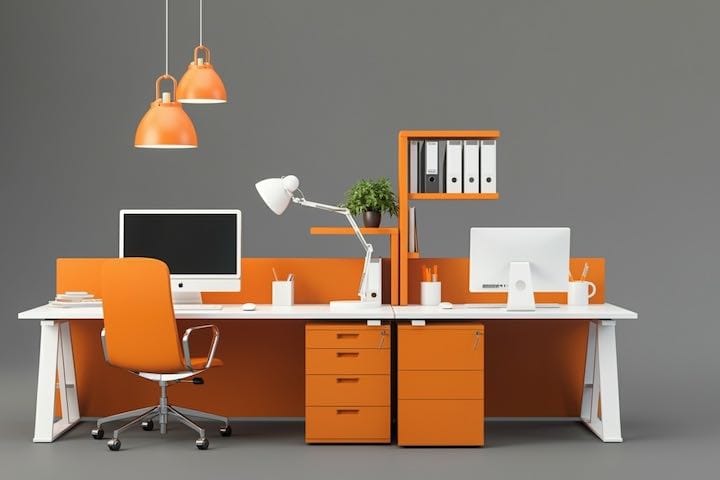MANAGING OFFICE SAFETY
This article covers How to effectively manage health and safety in office environments.
Compared to some other workplaces, offices can generally be considered low-risk environments. However, as we’ll see, office work can still present significant risks to your physical and mental health.
First though, it’s worth considering why we should bother about health and safety at all. Isn’t it just red tape and box-ticking?
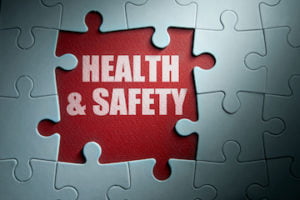
The most important reason is to protect the health and wellbeing of workers. Beyond this, thought, there are other strong moral, financial and legal arguments.
Modern society doesn’t accept that people should suffer injury or ill-health because of their work and yet… at the last count, workplace injuries and ill-health cost the UK economy around £15 billion a year. Think about some of the costs involved if you or someone at your work has a serious accident.
Health and safety at work has the force of law. Both employers and individuals can be prosecuted under criminal law – AND sued for compensation under civil law – if something goes wrong.
Lessons in the article are available for your staff as and Office Safety Training course.
So, we know that employers and employees have responsibilities under health and safety law. But what are they?
Under the Health and Safety at Work etc Act 1974, the main responsibility on employers is to ensure the health, safety and welfare of their staff. Employers also have a duty to protect people they don’t employ but who are affected by their activities – for example, contractors, visitors, temporary staff and the public.
In practice, employers fulfil these duties by identifying and managing risks which could cause harm, and providing:
- information about these risks and how they will be controlled
- suitable emergency procedure and first aid arrangements
- any necessary health and safety training
- any required equipment and protective clothing
- toilets, washing facilities, drinking water
Employers also have to report fatalities, dangerous occurrences, serious injuries and cases of ill-health to the authorities, and consult with staff on safety arrangements.
Employees also have responsibilities. By law, they have to:
- co-operate with their employer on safety
- tell someone about dangerous situations and deficiencies in safety arrangements
- not interfere with safety equipment
- follow safety instructions
- take reasonable care of their own and other people’s safety
So – how do you manage health and safety effectively in office environments?
Employers with more than five staff need to have a written safety policy which sets out how they will manage health and safety in their business – this spells out who does what, when, and how. Remember that, while responsibility for health and safety rests with the employer, in practice this is devolved down through the line management chain. So, if you manage staff, YOU are responsible for their work AND their health, safety and welfare.
Employers usually appoint people to help them manage safety. This includes roles such as first aiders, fire marshals and even professional safety advisers. Health and safety committees can provide a forum for arrangements and performance to be discussed.
Risk assessments are one of the main ways of managing safety at work – this means looking at a work activity, and:
- identifying what could cause harm, and to who
- evaluating the risk and deciding on appropriate control measures – steps to reduce the risk to an acceptable level
- recording findings and communicating the results
- reviewing and updating the assessment as necessary
Let’s use the example of moving equipment around the office as a work activity with the potential to cause harm. In this case, the main risk to health is of musculoskeletal disorders – aches, pains and strains, caused by heavy lifting.
And the group of staff affected are those who carry out this task. Sensible control measures could include using manual handling equipment such as trollies, and training in lifting techniques.
Risk assessments are needed for all work activities, so employees should be able to see a risk assessment for the tasks they carry out. Risk assessments are live documents, which are reviewed and amended if anything significant changes.
Let’s look at common office hazards. In each case, we’ll highlight things to know if you are to manage safety effectively in office envrionments.
Fire Safety
Fire can kill and seriously injure. And even if no-one is hurt, property damage or interruption to normal business can result in
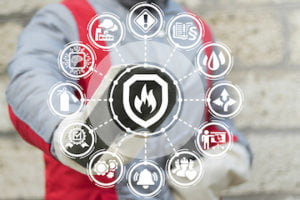
organisations closing permanently.
To reduce risks from fire in offices ensure staff understand;
- The basic steps to help prevent fires
- Where the escape routes are.
- Location of ‘break glass’ points.
- On hearing the fire alarm – (employees should know what this sounds like) – leave any belongings behind and quickly evacuate the building.
- Where designated assembly points are.
- Don’t attempt to use fire-fighting equipment unless you have been trained in its use.
- Understand they must follow the advice of fire marshals (and know who these people are)
As an employer be sure to undertake a fire risk assessment.
Office First Aid
In small offices, as a minimum there should be a stocked first aid box and someone appointed to call the emergency services.
In larger offices, you could also have trained workplace first aiders throughout the building, and a first aid room. Lists of first aiders and other arrangements are often posted on notices around offices, and/or on intranet websites.
Do your employees know who the designated first aider is?
It’s important to record accidents, incidents and dangerous occurrences at work so that the causes can be established, and steps

put in place to prevent the same thing happening again. When it comes to reporting, many organisations operate ‘no-blame’ cultures. Accidents etc. are treated as ‘learning events’ – opportunities to understand why something happened and so prevent a re-occurrence.
‘Near misses’ should also be reported – this is where something could have caused harm or property damage, but didn’t. What’s important here is the potential for harm or loss – the next person may not be so lucky!
Do employees know how to report an accident or near miss?
Slips, Trips and Falls
Slips, trips and falls account for more serious accidents at work than anything else. Offices should be well-lit, kept clean and tidy, with no trailing cables and nothing stored in walkways. Spillages and repairs should be dealt with promptly.
Even falls from low height can result in serious injuries. A suitable stepladder should always be used. Never stand on an office chair.
Managing Risks from Electricity

Most offices have schedules whereby electrical equipment is regularly ‘PAT’ tested for safety. Items which are regularly moved or unplugged – such as a laptop charger – can more easily become damaged. Get into the habit of looking at the condition of devices like this, including their cords and plugs before use.
If you see anything wrong, report it and put the item out of service until it has been repaired or replaced.
If you feel there are usually high risks in your office eg, old wiring Electrical Safety Training may be of benefit.
Work-related Stress
In the UK, work-related stress, depression or anxiety:
- are the biggest cause of work-related ill-health, accounting for 40% of the total figure; and
- account for most working days lost due to ill-health – an average of almost 5 weeks off per reported case.
Workload pressure is the most common cause of work-related stress. While most of us have busy spells or times when we are under pressure, when this becomes prolonged or excessive it can have a negative effect on our mental health.
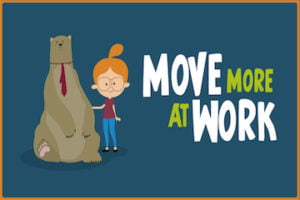
Talking to someone is important if you are feeling under pressure. For your employees this could be their line manager or another colleague, or they may have access to confidential counselling or employee assistance schemes. It’s important your employees know what support is available.
Click here for tips on creating more movement at work to help tackle sedentary behaviour and related conditions.
Display Screen Equipment Use
Using computers, laptops, tablets and smartphones is essential for modern working, but awkward postures, repetitive actions and simply sitting for too long can cause ill-health. This includes musculoskeletal disorders – aches, pains and strains, stress, visual fatigue and even more serious conditions linked to physical inactivity and sedentary behaviour.
Computer users should have individual DSE risk assessments to consider and reduce the risks to health.
But even if posture, chair and workstation set-up are good, staying in the same position for too long can lead to problems. Remember – The Best Posture is the Next Posture.
Manual Handling
Manual handling – lifting, carrying, pulling and pushing – is the biggest cause of musculoskeletal disorders at work. If manual
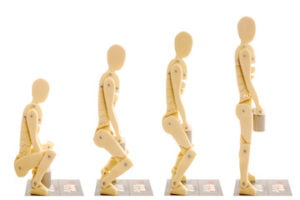
handling is unavoidable, use aids such as trolleys, trucks or cages when moving anything heavy. And if manual handling is part of a work role, tailored training should be carried out on how to do this safely.
We’ve looked at some of the most common risks to safety and health in an office environment. But there may be others in your own workplace – if there are, employees should be aware of these and the controls in place to mitigate against injury and illness. An online Manual handling course can help you achieve this.
Other Office Risks to Consider
If you are to manage health and safety in the office effectively, all the main workplace risks should be risk assessed.
Other risks linked to office work could include:
- driving to and from work
- using chemicals
- violence and aggression
- lone working
- environmental conditions: temperature, lighting, space and noise
Office risk assessments should cover the work activities which can cause harm and explain how these will be controlled. And remember, these are living documents that all affected should be aware of and be guided by.

Summary
This ends the article covering ways to properly manage health and safety in office environments. We hope you have found it useful. If you wish to provide clear simple Office Safety training to your staff please get in touch ([email protected])








